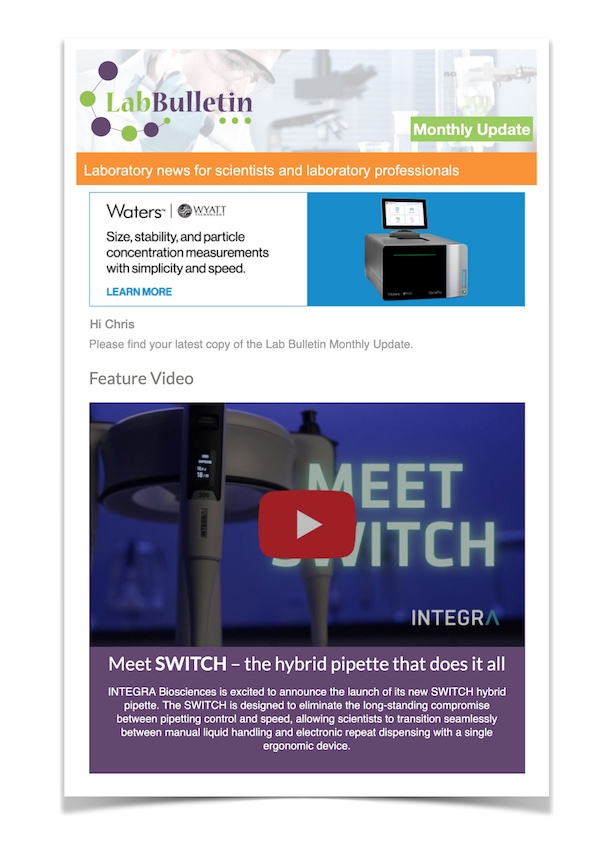Members Login

Channels
Special Offers & Promotions
First European Laboratory Obtains Accreditation for New Tissue-Typing Method for Stem Cell Transplants
Tests based on next-generation sequencing with Roche’s GS Junior System
 The Red Cross Blood Transfusion Service of Upper Austria has become the first laboratory in Europe to receive accreditation from the European Federation for Immunogenetics (EFI) for the use of human leukocyte antigen (HLA) tests based on next-generation sequencing with Roche’s GS Junior System. This new method will allow more precise and much more rapid tissue-typing and donor selection for stem cell transplants than has been possible to date. In addition, the HLA testing method previously only used for research will now also be available as a standard routine diagnostic procedure.
The Red Cross Blood Transfusion Service of Upper Austria has become the first laboratory in Europe to receive accreditation from the European Federation for Immunogenetics (EFI) for the use of human leukocyte antigen (HLA) tests based on next-generation sequencing with Roche’s GS Junior System. This new method will allow more precise and much more rapid tissue-typing and donor selection for stem cell transplants than has been possible to date. In addition, the HLA testing method previously only used for research will now also be available as a standard routine diagnostic procedure.
“Worldwide, around 50,000 people a year urgently require a stem cell transplant, and the chances of finding an allogeneic stem cell donor are about 1:500,000,” said Thomas Schinecker, Head of Roche Sequencing Solutions. “This accreditation is an example of how the potential of next-generation sequencing can be successfully translated from research into medicine and made widely available to patients in areas of high medical need.”
HLAs are used to determine compatibility between the tissues of different individuals (histocompatibility). Detection of the smallest individual differences in HLA sequences makes it possible to match donors and recipients at an early stage so as to adapt preventive and therapeutic measures, thus markedly reducing the rate of rejection reactions. The precision and speed of the process are key factors, particularly when searching for suitable matches in a bone marrow donor registry centralised at the global level.
Underlining the benefits of the new standard method, Dr Christian Gabriel, Medical Director of the Red Cross Blood Transfusion Service of Upper Austria, said: “Standardised laboratory procedures are needed to promote positive therapeutic outcomes for patients. EFI accreditation is an important step, allowing large numbers of patients to benefit from the latest technologies.”
About the Red Cross Blood Transfusion Service of Upper Austria
The Red Cross Blood Transfusion Service of Upper Austria (Blutzentrale Linz) is one of Austria’s largest blood and tissue banks. It is actively engaged in research and development for molecular tests and novel biological cell therapies. It is now one of Europe’s leading research institutes in the field of next-generation sequencing and is a pioneer particularly in stem cell research and regenerative medicine.
About the GS Junior System
The long reads produced by Roche’s GS Junior System make it particularly suitable for targeted sequencing in virology, oncology and immunogenetics, as well as for whole genome sequencing of microbial pathogens. The read lengths of up to 1000 bp already delivered by the GS FLX+ System will soon also be possible with the GS Junior System.
About Roche
Headquartered in Basel, Switzerland, Roche is a leader in research-focused healthcare with combined strengths in pharmaceuticals and diagnostics. Roche is the world’s largest biotech company, with truly differentiated medicines in oncology, infectious diseases, inflammation, metabolism and neuroscience. Roche is also the world leader in in vitro diagnostics and tissue-based cancer diagnostics, and a frontrunner in diabetes management. Roche’s personalised healthcare strategy aims at providing medicines and diagnostic tools that enable tangible improvements in the health, quality of life and survival of patients. In 2012 Roche had over 82,000 employees worldwide and invested over 8 billion Swiss francs in R&D. The Group posted sales of 45.5 billion Swiss francs. Genentech, in the United States, is a wholly owned member of the Roche Group. Roche is the majority shareholder in Chugai Pharmaceutical, Japan.
For more information, please visit www.roche.com
For life science research only. Not for use in diagnostic procedures.
454, 454 LIFE SCIENCES, 454 SEQUENCING, and GS Junior are trademarks of Roche.
All other product names and trademarks are the property of their respective owners.
Important Note: The tissue typing method described here is only available locally and not intended for use in the U.S
Media Partners


